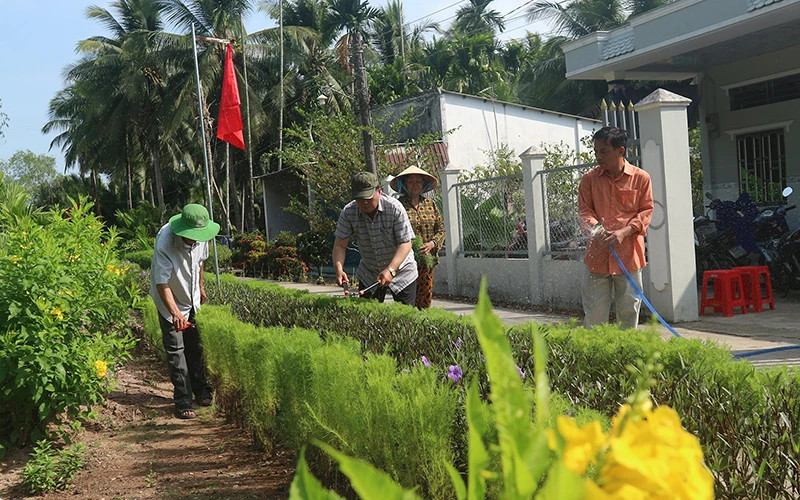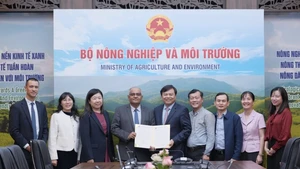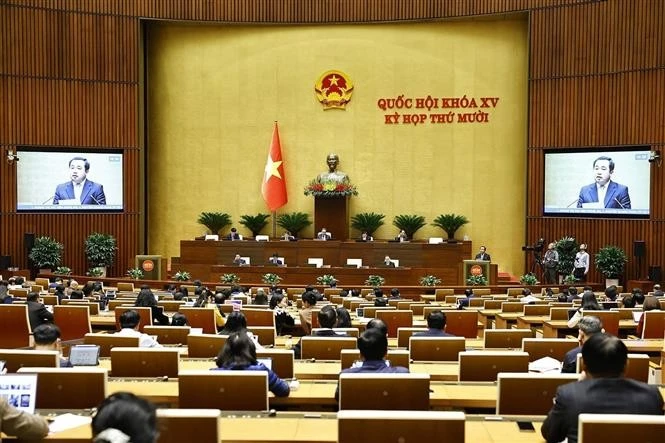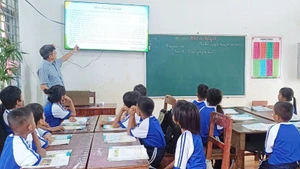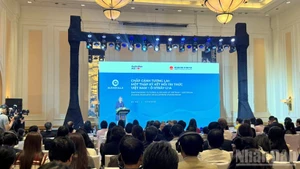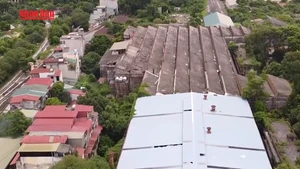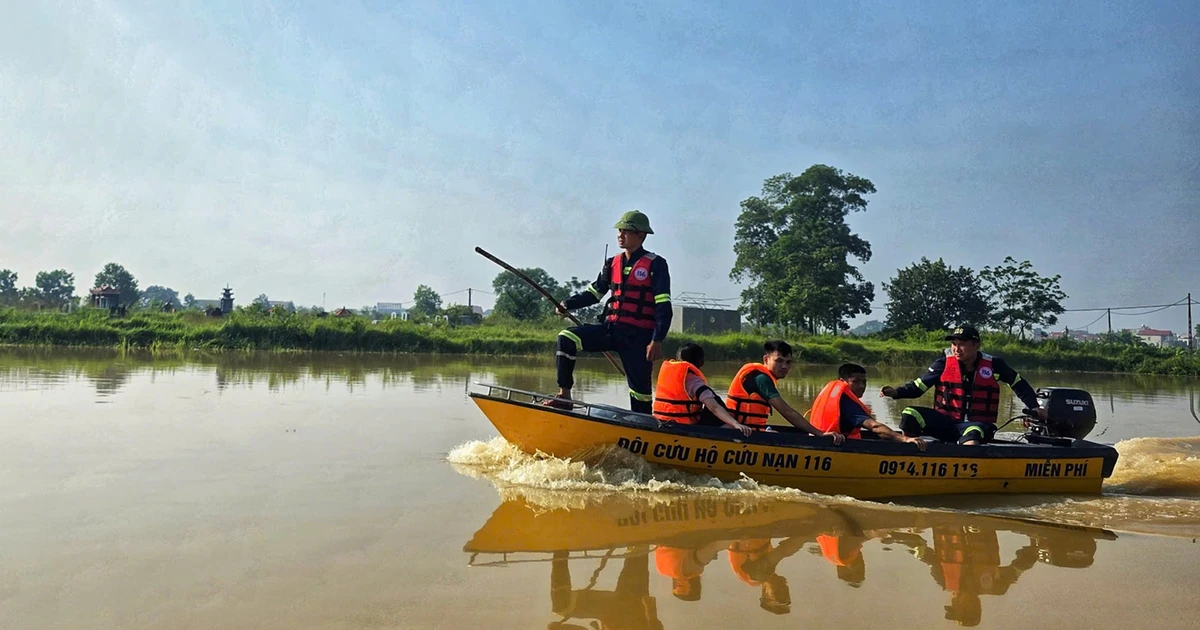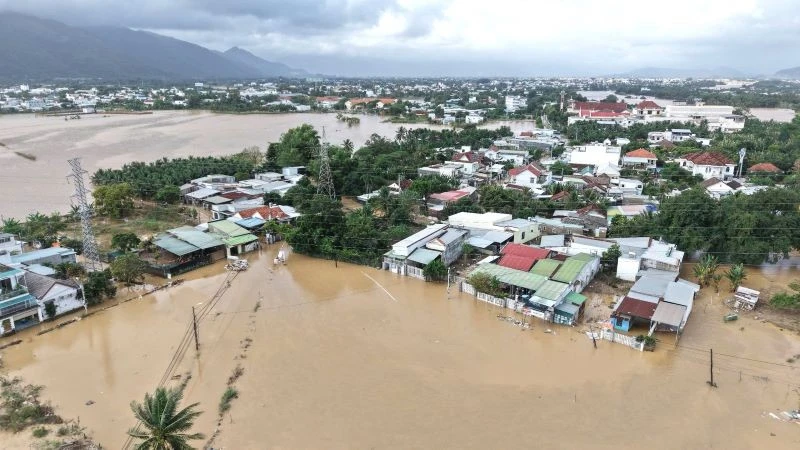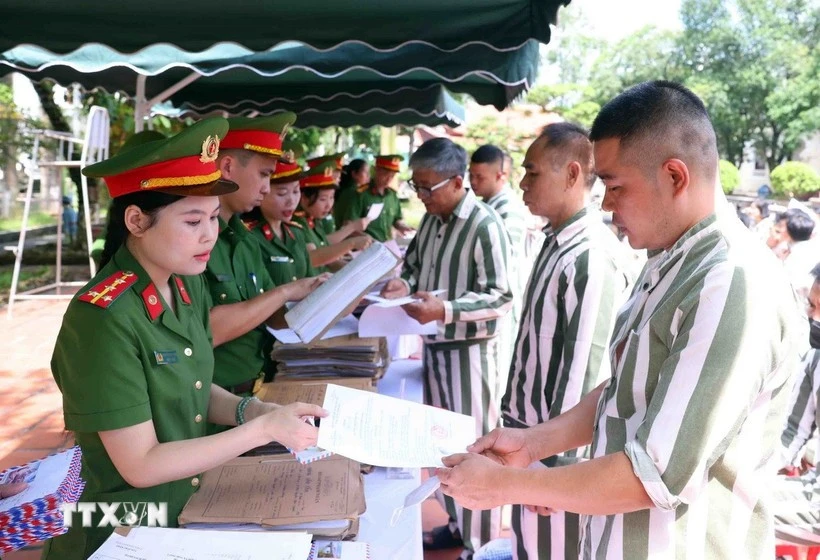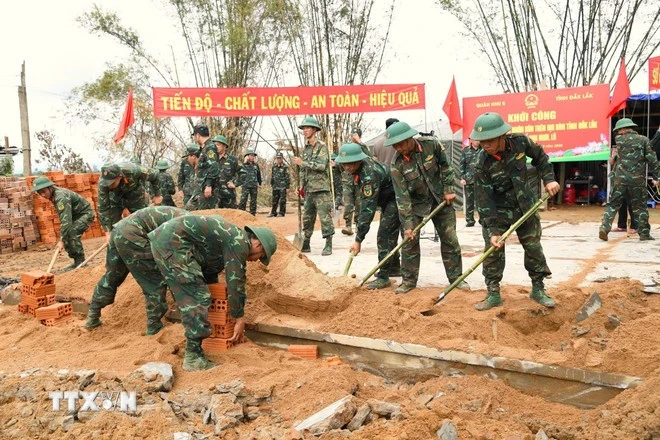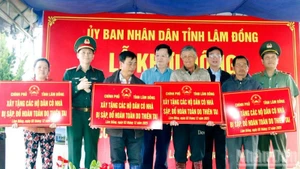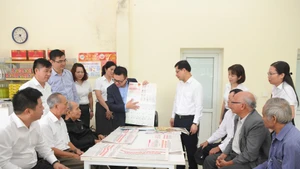Modern, spacious villages with a standard of living close to urban areas but still maintaining a peaceful green colour are familiar images in many new-style rural areas across the country.
Changes from the new-style rural areas
Every morning, cleaning their family's yard, the people of Van Mieu Village, Viet Lap Commune, Tan Yen District, Bac Giang Province work together to clean the new-style rural road in front of their house and the village's rest stop area. The rest stop is built on spacious land along the road with trees, a roof and rows of stone benches for people to sit and rest or for children to wait for the bus to go to school.
Nguyen Thi Thanh, whose house is right next to the rest stop, said that life in the village has changed significantly and everyone is excited to participate in building a model new-style rural area.
In addition to contributing money and labour like everyone else in the village, Thanh's family donated five stone benches to the rest stop.
Viet Lap is one of the first communes in Tan Yen District, Bac Giang Province to meet standards for new-style rural areas in 2022. This is a proud milestone for the people of Viet Lap Commune and Tan Yen District, after tireless efforts to complete each criterion in the new-style rural criteria set. Viet Lap is wearing a new coat with civilised residential areas and model roads, applying digital transformation in propaganda, meetings and promoting the construction of electronic libraries.
Secretary of the Van Mieu village Party cell, Dau Thanh Cuong, said the village built two civilised residential areas and a model road.
Being creative, careful, and implementing each criterion in the criteria for building new-style rural areas to gradually reach the standards is the way many localities in Soc Trang Province do. Gia Hoa 1 Commune, My Xuyen District, impresses with its nearly 2-kilometre model new-style rural roads, with rows of yellow trumpet trees blooming in bright yellow clusters.
Secretary of the Trung Hoa Hamlet Party cell, Nguyen Thanh Dau, said that after three years of launching the "Model new-style rural roads" movement, people have planted many types of flowers and taken care of them meticulously and thoughtfully. The hamlet's road has been recognised as a model new-style rural road of Soc Trang Province.
Spreading the values of new-style rural areas
Vice Chairman of Gia Hoa 1 Commune People's Committee Pham Hong Nguyen said that the movement on building model new-style rural roads was launched in Soc Trang Province in 2019.
The movement has spread, bringing many positive effects, "changing the face" of the environmental landscape in many rural areas and meeting the criteria for building advanced and model new-style rural residential areas and communes. The movement is changing people's habits and awareness in maintaining environmental hygiene and building a cultural and civilised lifestyle.
In fact, with the efforts of rural people and the entire political system, the national target programme on building new-style rural areas nationwide has entered its 15th year of implementation with many impressive figures and highlights achieved.
However, there are still some limitations such as the development gap between regions, many communes in remote, isolated and mountainous areas have not yet met the standards, infrastructure conditions are difficult, the quality of the standards is not sustainable, some localities have difficulty maintaining and improving the quality of the criteria after meeting the standards.
Therefore, focusing on solving the limited and urgent problems in the locality to narrow the development gap between regions, especially in mountainous areas, remote areas and difficult areas is raised. In particular, spreading the values of new-style and advanced new-style rural areas is the key to promoting the movement widely across the country.
According to Phuong Dinh Anh, Deputy Chief of Staff of the Coordination Office for New-Style Rural Area Development Programme, the new-style rural models will be developed in the coming time, with creativity according to the characteristics of each locality, such as focusing on implementing specialised programmes, to ensure the construction of new-style rural areas in substance, going into depth, creating a solid foundation for modern and civilised rural development, improving the people’s quality of life and deeply integrating into the international economy.
Therefore, building new-style rural areas needs innovation associated with agricultural and industrial development, to ensure employment and increase rural residents' income.
Deputy Minister of Agriculture and Environment Tran Thanh Nam said the ministry will focus on developing socio-economic infrastructure, ensuring synchronous connectivity between rural-urban areas and regions. At the same time, it will promote restructuring of the agricultural sector and sustainable rural economic development, associated with digital transformation and climate change adaptation, to increase people's income in a stable and long-term direction.
In addition, the ministry will implement solutions to sustainably reduce poverty, especially in ethnic minority and mountainous areas, and coastal and island areas.
The ministry advocates promoting propaganda so that people understand that building a new-style rural area is not a destination but a journey of continuous innovation, creativity and development.
Therefore, it is necessary to build a knowledge-based rural community - bringing knowledge to the countryside, developing the rural economy associated with preserving and promoting traditional crafts, promoting agricultural tourism, startups and innovation, developing the farm economy, linking production according to value chains and building a livable countryside, with harmony between tradition and modernity.
